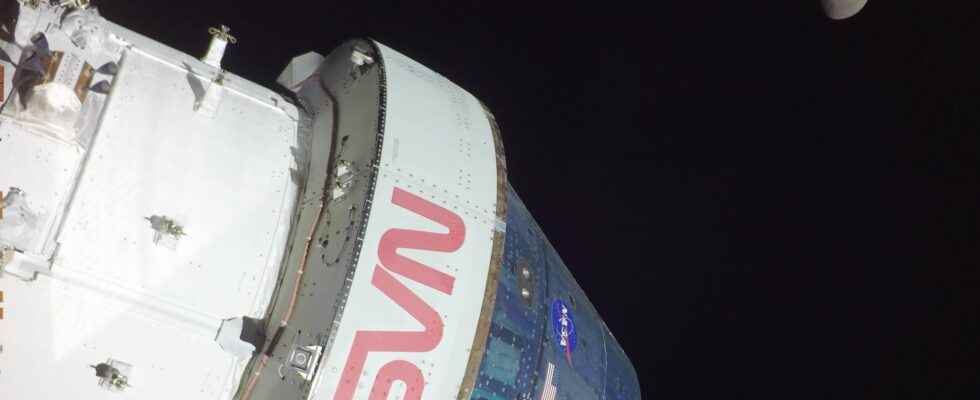The Artemis I mission continues. The Orion capsule flew over the Moon. It has yet to fit into orbit around it. The ship’s arrival in the lunar surroundings can be reviewed online.
Orion is within the Moon’s sphere of influence. The capsule, launched into space on November 16, 2022, is the centerpiece of the Artemis I mission, the first of the Artemis program. It is currently uninhabited, but its flight makes it possible to prepare future missions with crews.
The vehicle finally approached the lunar surface. Orion will then have to orbit the Moon. The event could be followed live, online. Now you can see it again.
- When ? The live stream took place on Monday, November 21, 2022, from 11:15 a.m. The capsule passed closest to the Moon shortly before 2 p.m.
- Where ? On NASA’s YouTube channel.
- What ? The Orion capsule, of the Artemis I mission, approaches the Moon and flies over it less than 130 km of its surface. Soon, it will fit into an orbit around the star.
After several days of travel, Orion now arrives at his destination. The capsule must evolve more than 450,000 km from our planet, and 64,000 km beyond the far side of the Moon. The capsule’s orbit around the Moon is retrograde (counterclockwise). The next animation shows what the insertion into this orbit will look like, compared to an Earth-Moon reference frame.
The first flyby of the Moon by Orion
We could expect to see images obtained live from the capsule. Orion’s solar panels are equipped of cameras, which allows you to take full advantage of what is happening.
If a person had been able to witness the spectacle of this lunar approach from the capsule, what would they have seen? Around 10 a.m., Orion was about 16,900 km from the Moon. ” If you were on board, the Moon would seem more than 20 times larger than when you are on Earth. To realize this, stretch your arm towards the sky and clench your fist… the Moon would be as big as your fist! », pointed out Jaxa (Japanese space agency) planetary scientist James O’Donoghue on Twitter.
Orion was closest to the lunar surface, at an altitude of 128 km precisely, at 1:57 p.m. But, at that time, we couldn’t see it. ” Orion will lose communications with Earth as the capsule will be behind the Moon from 1:25 p.m. to 1:59 p.m. », warned ESA (European Space Agency). It is in this period of time that a maneuver gravitational assistance was planned: the engines of the European service module of Orion made it possible to achieve a thrust at 13:44. We knew shortly before 2 p.m. that everything had gone well.
You can also follow the route of the Artemis I mission in real time thanks to a NASA site. The lunar flyby and the insertion into orbit of Orion do not mark the end of the mission. It will still be necessary to bring the ship back to Earth.

